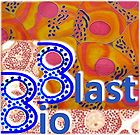| Bioblast about | MitoPedia | MitoFit | Gentle Science | MitoGlobal | Impressum |
- The mt-information synthase for MitoPedia, MitoFit, and more
- Bioblast Boost - in the spirit of Gentle Science
Bioblast alert 2016(01): 2016-02-10
Over the past years, there was a continuous struggle to find a language for translating our experimental findings obtained from SUIT protocols into useful information.
Still our standard terminology and some even less consistent variations are not commonly understandable. Despite all efforts, including sequential editions of ‘MitoPathways’ (The Blue Book), those attempts were basically a failure: We cannot expect any audience to grasp our message, if we say ‘Complex I’ – yet actually have in mind the pathway from NADH-linked substrates to CI - CIII - CIV. Should we rather say CI-CIII-CIV-linked ???
Or even worse (my mistake!): We say ‘CI&II’ (and worse: ‘CI+II’: are the two enzymes added??), but we actually mean CI&II - CIII - CIV !!!
I invite you to challenge fundamentally the way we think and talk and write about our results. To drop the CI-linked, CII-linked, CI&II (CI+II) terminology is not trivial but is a necessary step. At this stage, you and many colleagues will not like to make a real change. But such a change is not only important but necessary to make ourselves understood by a general audience, to make our field of mitochondrial physiology less confusing and more attractive. Perhaps we can even attain a deeper understanding among the involved specialists - the Bioblasts.
If you agree that in mitochondrial respiratory physiology we should not say ‘Complex I’ for what IS NOT Complex I, that we should not talk about a subset of enzyme complexes when we have in mind much more complicated pathways fuelled by a selection and combination of specific substrate types, then I seriously ask you to stop for a moment and take a look at some new entries into MitoPedia which I have prepared during the past months.
I am looking forward to your feedback. Your input will be essential to find a common language for communication with the people whom we want to reach with our research in mitochondrial physiology. Lets cooperate in an effort on quality management of reporting our results. The messages of mitochondrial physiology need to be understood on a global scale, to support the various health systems in encouraging modern populations to become and stay MitoFit.
With best wishes and kind regards,
Erich
|
Popular Bioblast pages
|
>140,000 views: Bioblast 2012 |
>120,000 views: O2k-Network |
>110,000 views: MitoFit |
|
>100,000 views: O2k-Publications |
>80,000 views: MitoEAGLE |
>70,000 views: Gentle Science |
|
>60,000 views: MitoPedia |
>50,000 views: O2k-Protocols |
>40,000 views: O2k-Feedback |
Bioblast accessed >710,000 times (2018-04-01) - What is BioblastOroboros accessed >710,000 times (2018-04-24) - What is Oroboros












